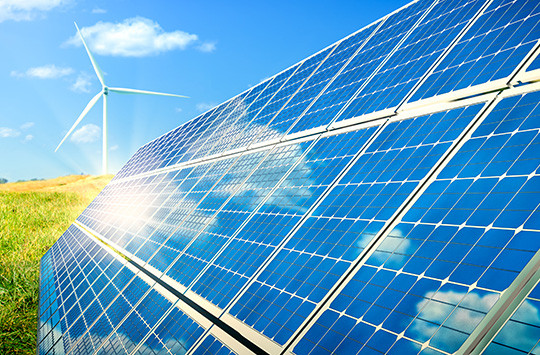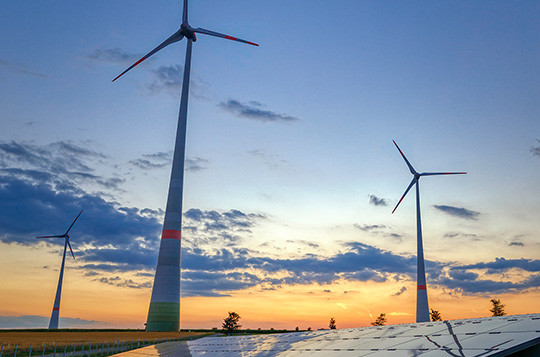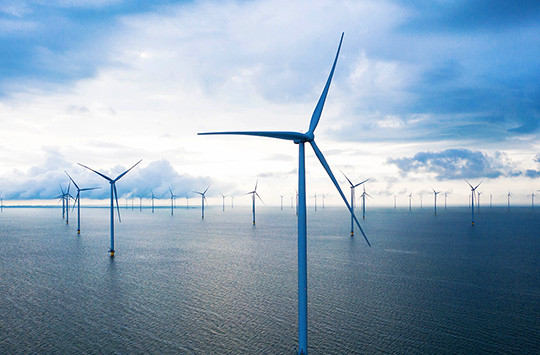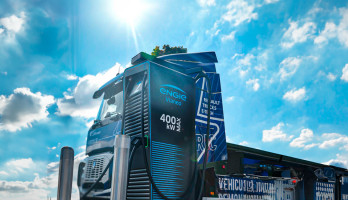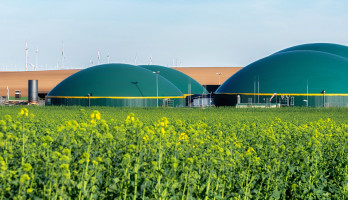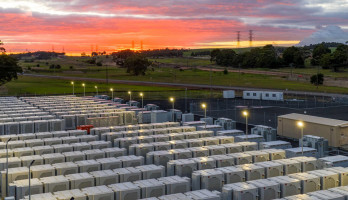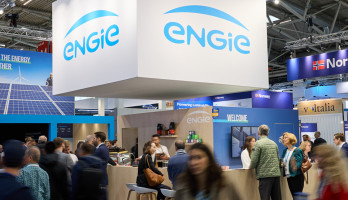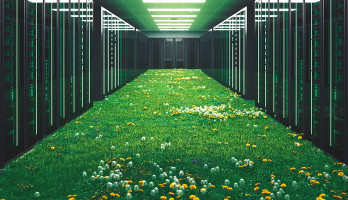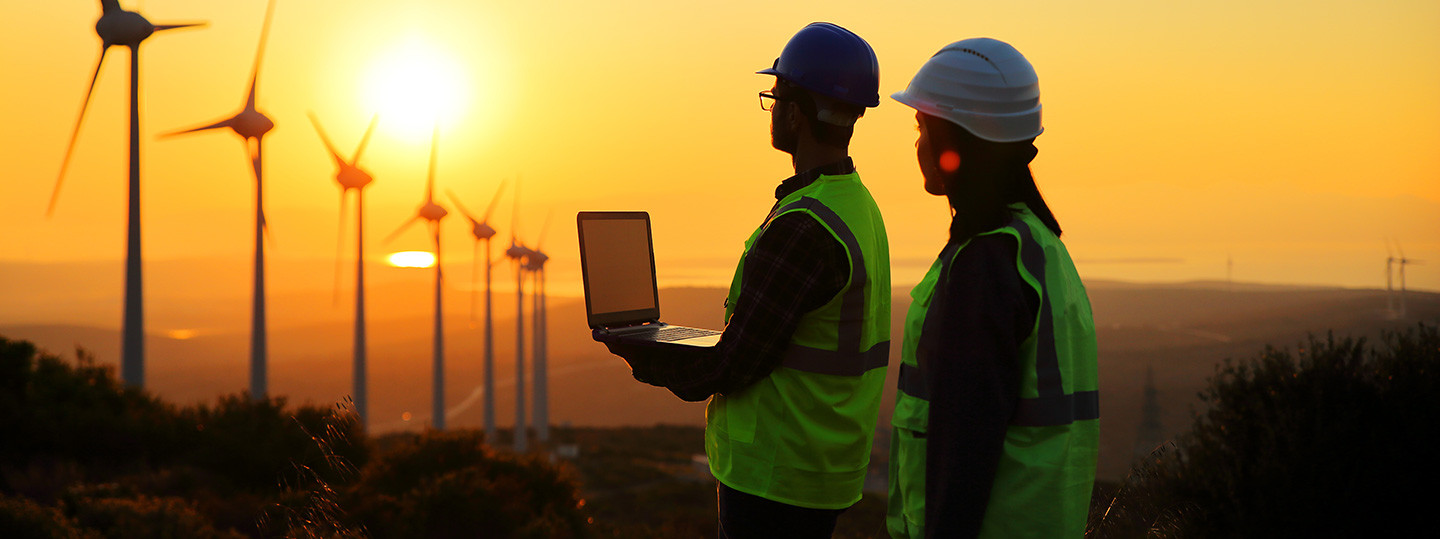
New regulation of the energy industry law - will everything be different now?
Climate change, energy transition, security of supply - the topic of energy has never been as relevant and explosive as it is today. While the technical solutions are available, the energy industry is looking eagerly to politics. On the part of the federal government, the task now is to introduce new regulations as quickly as possible that will reduce bureaucracy, accelerate the expansion of renewables and take into account the current supply-related and geopolitical challenges. With numerous new regulations on energy law, the federal government has now formulated its answer to the questions of the day. What was decided in the Bundestag before the summer break? From a market perspective, we take a look at the key points of the biggest energy policy amendment in years.
An overview of the new energy law
Whether it's the Renewable Energies Act, the Buildings Energy Act or the Energy Security Act - the new provisions of the energy industry law provide for far-reaching changes to numerous legal texts. The federal government has revised more than ten individual laws with the package of measures. Additional regulations and new laws have also been in force since the package came into effect on July 29. The package consists of a total of five amendments for the expansion of renewable energies and two amendments for the strengthening and expansion of precautionary measures. Two core aspects stand out:
- Speeding up climate policy - with the targets agreed in the coalition agreement and the implementation of the European Union's targets
- Respond to the current crisis - ensure security of supply in the energy sector, especially in gas supply.
Time is pressing, and so the amendments to the law passed through the parliamentary bodies with astonishing speed. In the context of the revision of the energy industry law, the federal government is pulling various levers. In principle, the entire energy industry and many related laws are affected.
New rules for renewable energy
The heart of the new regulation of the energy industry law is a groundbreaking decision: From now on, the use of renewable energies is in the overriding public interest and serves public safety. The principle thus enshrined in the Renewable Energy Sources Act (EEG) creates an entirely new dynamic in the electricity sector. Renewable energies now have priority in the balancing of protected interests and, for example, in many cases involving nature conservation and species protection. The decision is likely to significantly accelerate expansion in the electricity sector, especially in wind power.
In 2030 - in other words, in just eight years' time - the federal government envisages a demand for renewable power generation in Germany of 600 terrawatt hours, or 80 percent of Germany's gross power consumption at that time. By comparison, today's figure is 240 terrawatt hours. To close this enormous gap, the tender volumes for wind and photovoltaics will be massively increased.
"The targets are ambitious, but not utopian. The capital market is there, and so are the investors."
Frank Höpner, Head of Strategy and Energy Policy, ENGIE Deutschland
Photovoltaics
The federal government plans to quadruple photovoltaic capacity on open spaces and roofs to 215 gigawatts. This would mean that by 2030 Germany would have six to seven times as much capacity as was previously available on a fossil basis. To achieve this, innovative utilization concepts are to be promoted - such as floating modules and systems on agricultural land and moors. In addition, solar parks with a width of 500 meters may now be erected next to traffic routes such as highways - this is more than twice as much as before. In addition, the subsidy rates for feeding electricity into the grid for rooftop systems will increase, making their operation more attractive.
Onshore wind energy
For onshore wind power, the new regulation of the energy industry law provides a significant growth impulse. By 2030, the installed capacity on land is to more than double to 115 gigawatts. As already stipulated in the coalition agreement, the federal states are each to set aside around two percent of their land area for this purpose. With the new Wind-an-Land-Gesetz (WaLG), this target has now even been enshrined in law, which increases the pressure on the states to implement it. In addition, the new regulation of the energy industry law serves to reduce bureaucratic hurdles. For example, the assessment of wind turbines under species protection law is to be standardized and simplified within the framework of the Federal Nature Conservation Act (BNatSchG).
Wind power at sea
Offshore electricity is also on the rise. The federal government plans to quadruple installed capacity to 30 gigawatts by 2030 - and even to 70 gigawatts by 2045. In order to increase the supply of land, areas that have not yet been centrally pre-surveyed may also be put out to tender in the future. Until now, only areas that had been assessed for their suitability as wind farm sites on behalf of the Federal Maritime and Hydrographic Agency (BSH) were allowed to participate in tendering procedures.
Hydrogen
Hydrogen is another important key technology in the energy transition. The expansion target, as already set out in the coalition agreement, is ten gigawatts by 2030, which is quite a lot. The expansion is to be made possible by a rapid, technology-neutral market ramp-up with a focus on green hydrogen. To this end, several funding programs have been announced or, as in the case of IPCEI Hy2Tech, already approved. In addition, there are two new EEG tender segments - for the generation of electricity from green hydrogen and for hydrogen-based electricity storage. Nevertheless, one thing is clear: Germany will remain an importing country for hydrogen and will not be able to supply itself in the future - nor does it have to. Numerous hydrogen solutions are currently being developed on European soil that Germany can draw on. These include, for example, the ENGIE Hub showcase project "HyNetherlands".
Grid expansion
Pushing power generation on rooftops and open spaces is only one part of the energy transition. What often goes unnoticed in the discussion are the power grids themselves. Experts have already considered grid expansion to be one of the weak points of the energy transition. The new expansion targets exacerbate the situation: grid capacities are nowhere near sufficient for the planned expansion. This is true not only with regard to the capacity to be added, but also with regard to sector coupling and future usage scenarios, for example in the area of mobility: The fact that electric cars will soon be charging in every new development area far exceeds the current technical capabilities of the power grid.
The federal government is aware of this and therefore wants to accelerate grid expansion. Among other things, the revision of the energy industry law provides for an adjustment of the Federal Requirements Plan, which Germany uses to regulate the expansion of its networks. 17 of the expansion projects included in the plan have been expanded, and 19 new projects are being added.
However, the legislator would still have to rethink some practical challenges in this regard. In the case of grid expansion for hydrogen supply, for example, Germany is far from the future. The electrolysers are mainly located on the coast, while German industry, which needs the hydrogen, is located in the south of the country. What is needed are appropriately well thought-out supply concepts. Ideally, these should incorporate the existing infrastructure in Germany. Disused natural gas pipelines could be reused for hydrogen - not all the pipelines would have to be laid anew and twice.
Building sector
From 2024, every newly installed heating system is to be powered by at least 65 percent renewable energy. This will significantly benefit the expansion of renewables. The question remains, however: on what basis? The gas side tends to be left out when it comes to green hydrogen and bio-methane in buildings. Both energy sources are to be used primarily in sectors that are difficult to decarbonize - such as industry. Solar thermal makes sense, but the space is already competing with photovoltaics. We therefore anticipate a push on heat pump technology - and an urgent, nationwide wave of retrofits. A great deal still needs to happen to meet the mandatory 52 million metric tons of CO2 equivalent reduction in greenhouse gas emissions in the building sector by 2030.
New regulation of energy industry law: concern about security of supply
When it comes to natural gas, Germany is taking a clear line: getting away from Russian natural gas as quickly as possible. The cutback in natural gas imports from Russia is hitting the energy industry hard. In fact, the sheer volume of gas imported from Russia to date cannot be substituted by other sources. This poses a real problem for the economy - not least because of rising procurement prices, which threaten to expose utilities to a serious risk of insolvency. Gas prices have almost doubled within a year. However, the new regulation of the energy industry law now allows costs to be passed on to end customers for a limited period.
Good to know: Natural gas plays a role in more than just heat supply. In fact, it is an important pillar of German electricity generation. Ten percent of electricity currently comes from gas-fired power plants. Despite the crisis, it is difficult to impose a production ban on these plants now. Nevertheless, the finance minister is already arguing in favor of stopping electricity production with gas and relying on nuclear power instead. An alternative to nuclear power would be to leave the issue to the market. Retired coal-fired units that have been temporarily reconnected to the grid could produce much more cheaply than gas-fired power plants, which would let the matter sort itself out via supply and demand.
New regulation of energy industry law - a conflict of goals?
The new energy laws do a lot of things right, but many market participants would have liked to see more - especially in terms of reducing bureaucratic hurdles. In any case, it remains obvious that the energy transition and a secure energy supply will not come for free. Rising prices, a lack of capacity and an enormous need for expansion and refurbishment are generating costs on all sides - costs that, in case of doubt, will continue to rise. The federal government must therefore succeed in the triple balancing act of meeting the goals of EU climate policy and at the same time keeping the energy turnaround affordable for producers as well as consumers. As energy experts, we at ENGIE deliver sustainable, cost-efficient and safe concepts for this.
Our Expert

